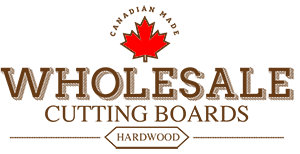Signs it’s Time to Replace Your Cutting Board for Safety and Hygiene
Deep Cuts and Grooves:
Profound incisions and grooves on a cutting board extend beyond mere aesthetic concerns; they can foster the growth of bacteria, presenting a challenge for effective cleaning. When a cutting board develops deep cuts, the process of sensitization becomes progressively more difficult due to bacteria finding hiding spots in the crevices. If you notice such damage, it’s a clear sign that the board should be replaced to ensure the safety of your food preparation.
Excessive Warping:
Cutting boards are often exposed to varying levels of moisture, and over time, this exposure can lead to warping. Excessive warping compromises the flat surface of the board, making it unstable and potentially hazardous during food preparation. A warped cutting board is more likely to slip and slide on the counter top, increasing the risk of accidents. If your cutting board is noticeably warped, it’s time to consider a replacement.
Unpleasant Odors:
Lingering odors on a cutting board are not only unpleasant but also indicate that the board may be harbouring bacteria and other contaminants. Despite thorough cleaning, certain materials can absorb odors over time, compromising the freshness of your ingredients. If your cutting board retains persistent odors, it may be time to invest in a new one to maintain the integrity of your kitchen tools and the flavors of your food.
Conclusion:
Regularly inspecting your cutting board for signs of wear, deep cuts, excessive warping, and unpleasant odors is essential for ensuring a safe and hygienic kitchen. When any of these indicators become apparent, it’s advisable to replace the cutting board promptly to protect against potential food borne illnesses and maintain the overall cleanliness of your kitchen environment. By staying vigilant and proactive, you can continue to enjoy the benefits of a well-maintained and reliable cutting board in your daily culinary activities.
